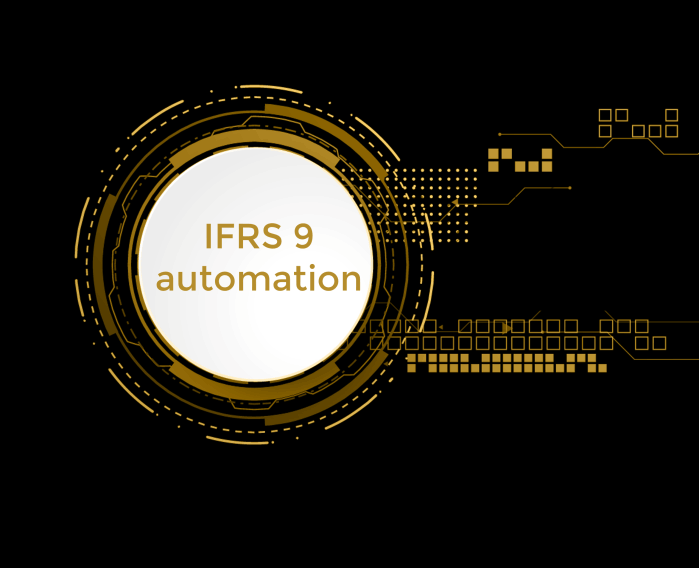For long ECL calculators and analytics platforms that also host IFRS 9 models have passed off as IFRS 9 automation. Not only does this leave manual interventions across the process and calculations, and overrides being undertaken outside of the system. It also increases the time taken to close financials and elevates the risk of errors in financial reporting. Model hosting platforms and ECL calculators can lead to inaccurate ECL computation and increase volatility in reporting earnings.
Why is Kepler IFRS 9 the gold standard?
Kepler IFRS 9 automation enables you to complete your financial closure within 30 minutes each quarter so that you can focus your time and effort on actual credit risk management, credit risk pricing and portfolio evaluation.
Kepler IFRS 9 provides you with one-click model validation reports, guided model development and a pre-built library of models for plug-and-play deployment.
Kepler IFRS 9 covers all key forms of financial reporting and not just limited to generating ECL provisioning numbers.
With Kepler IFRS 9 you can easily generate reports covering portfolio classification, EIR computation / re-computation, modification assessment, amortization, stage identification, curing, computation and comparison of ECL numbers, attribution of ECL numbers to specific positions, simulation of ECL numbers, accounting entries, auditable management adjustments, regulatory and financial reporting disclosures.
Automating credit risk management is not just about hosting models and applying PD, LGD and EAD factors to arrive at ECL.
Kepler IFRS 9 provides you with a wide-variety of credit risk modelling features including facility pooling, rating assignment and prioritization, collateral allocation, collateral optimization, cash flow generation, model development / re-development, model validation, re-calibration of macro-economic factors in PD and LGD models, ECL computation and ECL forecasting.

ECL calculators are glorified spreadsheets. They merely take PD factors either out of credit transition matrices or from PD models. In most cases, regulatory LGD numbers are used. EAD is equated with exposures. This is not only sub-optimal but incorrect with a number of pre-built and conservative assumptions. EAD numbers are not just outstanding numbers but actual exposure including interest accrued, future interest, overdue interest, limit, prepayment rate and any remaining fees / expenses that should be calculated on each assessment date based on actual and behavioral life. PD models should be hosted within the IFRS 9 automation platform. LGD numbers should capture recovery history and patterns after giving adequate consideration to collateral allocation between facilities.
ECL calculators are merely a wasted investment in automation that perform even less optimally than spreadsheets and continue to become difficult to use with every run.
Modelling and analytics platforms complemented by a workbench have been seen as the traditional answer to IFRS 9. In the hurry to complete automation in a world with fewer alternatives, institutions believed that existing modelling or analytics platforms that also hosted credit risk models would suffice as IFRS 9 systems.
Modelling is an essential but a very small part of IFRS 9 automation. More importantly, modelling is a one-time activity that requires annual calibration and data updates. Modelling platforms expect users to do this manually each time without having adequate levels of model governance or validation metrics in place.
Using modelling and analytics platforms for IFRS 9 is an overhead that keeps adding cost in terms of human resource cost, maintenance costs and cost of model risk while entirely missing the financial reporting and regulatory intervention workflows.
Preparing disclosures requires computations that are not automated and are not always a result of direct outputs from accounting systems. Disclosures also require period-on-period comparisons and data cuts that are not readily available. Doing this manually consumes human hours running into days at each reporting period. Automating this using reporting tools separately can massively increase the overhead further. Kepler IFRS 9 comes pre-built with out of the box financial and regulatory reports that require no customization. Just analyze, extract and submit the output.
Most legacy source systems do not compute EIR. Neither do they factor in adjustments resulting from fees and other such income into the EIR. This means that the computation of EIR in source systems is incorrect and so is the interest accrual carried on into the financial statements. Fixing the EIR computation is important to ensure accuracy in financial reporting. Without this, reconciliation headaches can impact each reporting period closure. Modifications to facility terms can further increase the computation and reconciliation headaches.
Kepler IFRS 9 comes pre-built with an EIR calculator. It addresses cash flow generation, reconciliation with source system interest computation, computation and generation of accounting entries based on EIR and addressing modifications to facilities.
IFRS 9 automation is not the end goal. It is a means to a larger end i.e., pricing credit risk accurately and competitively. It is also the basis for identifying early warning signals in a portfolio and keeping a keen eye on changes in underlying risk factors that impact the credit portfolio. IFRS 9 automation sets the platform for more competitive and accurate credit pricing. It also enables faster response to credit stress.
Kepler IFRS 9 has an integrated modelling, model risk management, model validation and model maintenance platform. This means that your models will always be calibrated, updated and optimized with minimal effort. It also means that you have one-click reports ready to demonstrate the model health metrics to regulators and auditors.
Download our factsheet or request a demo to know more about Kepler IFRS 9